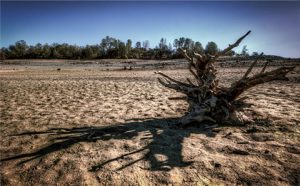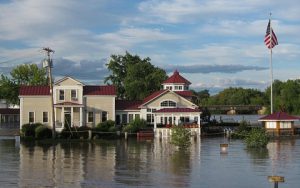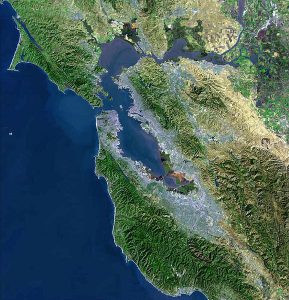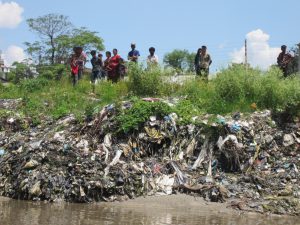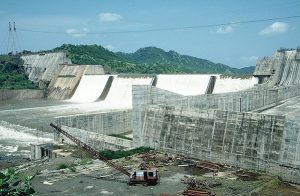It was a first in California’s history. Standing in an alpine meadow amidst dry grass and rocks in the Sierra Nevada mountains, Governor Jerry Brown announced mandatory water restrictions for the entire state: “This historic drought demands unprecedented action,” he said. “People should realise that we are in a new era.”
In a normal year, the area near Lake Tahoe where Brown was holding his press briefing would be covered by five to six feet (1.5 to 2 metres) of snow. But this is not a normal year: California gets 30% of its water from mountain snowpack. But the snowpack is down to 5% of the average – the lowest level since the beginning of state-wide measurements in 1950. And with the end of what is normally the wet season, there is no hope for relief any time soon.
This is why urban residents and businesses will now be forced to cut their water use by 25% from 2013 levels. Golf courses, campuses and cemeteries have to install water saving systems to meet this goal. Farmers and other business owners who illegally divert water face hefty fines. In the meantime, consumers are being offered a state-wide rebate program to buy water-saving appliances.
The measures sound drastic, but many experts say they fall short of what is needed in the medium and long term. Most agree that upgrading the state’s water infrastructure should be an urgent priority, and that more investment in recycling and other treatment technologies is needed. Beyond that, environmentalists call for restrictions on the thirsty agricultural sector as well as the oil and gas industry.
And some call for even more ambitious national solutions to augment water supply in the western US. One such idea that has gained more attention in recent years is a proposal to transport water from flood prone regions in the East – in what would be an American version of China’s controversial South-North Water Transfer project.
Most of California’s water infrastructure was built more than 80 years ago, and it is estimated that 10 to 15% of urban water is lost through leaking pipes. Cities like Los Angeles and San Francisco have already allocated billions of dollars to replace them, but smaller towns could use more help, said Adam Scow, the California Director of Food & Water Watch. “Reinvesting in our water infrastructure should be a local, state and federal responsibility.”
Communities are choosing different approaches to solve their water problems. Several towns in California are building or reactivating desalination plants. But critics point out that such projects are costly and energy-intensive – which is why most experts point to recycling as a more promising and cost-effective way to reduce the use of fresh ground and surface water.
A new wastewater recycling facility in Orange County is often cited as a model for future water use: In this “toilet to tap” approach, recycled sewage water is injected back into the ground water and gets additional filtration as it percolates down. At Stanford University, the ReNUWit research centre works on commercialising new technologies to recover clear water from wastewater.
Thirsty farms
But many in the environmental community believe that all the recycling in the world will not quench California’s thirst for water as long as the Governor does not go after the agriculture sector which accounts for 80% of the state’s water consumption. The state now produces almost half of US-grown vegetables, fruits and nuts. “His plan includes no reduction targets for the sector. It also does not prohibit the planting of new water intensive permanent crops,” complained Tom Stokely, water policy analyst for the California Water Impact Network.
Almond trees are Stokely’s favourite example for such a highly water intensive crop. Farmers in the Central Valley grow 600 million pounds (more than 270,000 metric tonnes) of almonds per year, and according to an investigation by Mother Jones magazine, the production of each almond requires more than one gallon (almost 4 litres) of water.
The debate over the almonds separates environmental activists from more business-minded politicians. Pat Mulroy, the former general manager of the Southern Nevada Water Authority, thinks that it would be unrealistic to place restrictions on an agricultural product for which there is high global demand.
California accounts for more than 70% of the world’s almond supply, and one of its biggest markets is China. “Human food demand is increasing, and every time a country like China makes a successful transition from a developing to a developed country, that also triggers a transition in the diet”, said Mulroy, who is now a researcher at Brookings Mountain West.
Limits to conservation
Mulroy agreed that conservation has to be a priority, and she pointed to the efforts Nevada has taken to cut back on water use. “But once you have reached the limits of conservation, you will have to augment the supply from somewhere else.” She thinks it would be worth researching the feasibility of diverting excess water from the Mississippi River to the Colorado River – an East-West water pipeline network similar to China’s South-North Water Transfer project.
This idea has no support in the environmental community. “These kinds of high-cost infrastructure projects don’t look at the root causes of our water problems”, said Stokely. They would also be difficult to implement: In the US, the authority over water issues lies with the states, and water rights in the West are governed by a complex system of contracts dating back to the time of the land reclamation.
This at least, is a point on which Mulroy and the environmental community see eye to eye. The US is lacking a unified national water management system, and in times like these, it becomes increasingly clear that it needs one.
